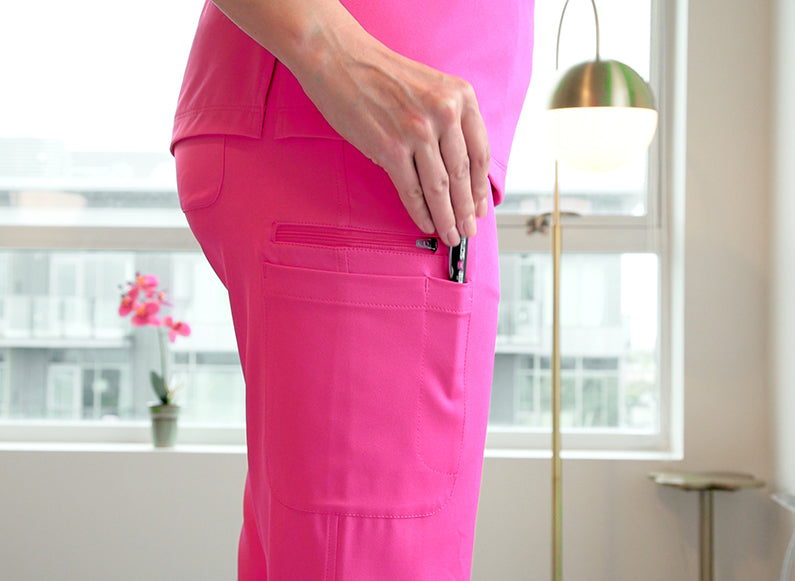Mindfulness and meditation used to be a fringe-type of self-care not too long ago. Now, it’s hard to meet anyone who hasn’t at least heard of “mindfulness.” Even though many of us know it is good for us, and we tell ourselves we should probably do it more often一sometimes just the idea of taking a couple of minutes to slow down and be present in a moment of silence can feel ridiculous. “Who has time for that?” is a common thought that can pop into our heads when someone first mentions the idea to us. We’re busy!
Nurses are usually balancing a huge to-do list with pressing needs that constantly change throughout the day, leaving them feeling like they are never really catching up. The to-do list does not stop once the shift is over. When it comes to mindfulness and meditation, it’s really easy to say “Yeah, when I have time, I’ll definitely give meditation a shot.” But the truth of the matter is that we will most likely never have time to meditate if it keeps getting pushed to the back-burner. So, what do we do when we have no time to meditate, but know it’s important and want to add it to our lives?
First, it’s important to know the health benefits to find a strong “why” that provides motivation. Second, it’s essential to take the pressure off by finding an easy way to start a simple practice. Even one minute a day is better than no minutes a day..
Trust the Science
Mindfulness was a term first coined by Dr. Jon Kabat-Zinn when he established the Mindfulness Stress Reduction Clinic at the University of Massachusetts in 1979. There is a beautiful short documentary about this program that gives a real look into the powerful impacts of mindfulness for people trying to deal with unmanageable pain (before mindfulness started being used to help manage anxiety, depression, etc.). There is a particularly moving scene where Dr. Kabat-Zinn wipes away the tears of a patient who is working through being present with her pain as it starts to change and dissipate.
Since 1979, the science behind mindfulness and stress reduction has exploded. According to the American Psychological Association, there are over 200 research studies on mindfulness devoted to reducing stress, anxiety, and depression. Other mindfulness studies show how mindfulness impacts physical fitness, parenting, religious devotion, weight-loss, sleep, time-management, decision-making, chronic health conditions, and more. Just Google something you want to tackle plus the word “mindfulness” and a study that has explored how the two relate to each other is likely to appear. Connecting mindfulness to an area of your life you want to change or improve can help establish a motivation to cultivate a regular practice.
Build a community
In the age of Zoom and online forums, there are now numerous ways to get involved with community groups that offer live, free meditation groups daily. This is a quick way to get started without the pressure of figuring it out on your own. No, you don’t have to virtually sit with a bunch of monks for hours (unless you really want to!). There are plenty of regular people who meditate and practice mindfulness.
Join a local meditation community center
Most meditation centers provide mindfulness classes and sittings, where you can sit together for guided meditation. These are typically free with an option to donate. Search for your city and the words “meditation center” or “mindfulness classes.” “Common Grounds” is an example of an excellent local meditation center in Minneapolis, Minnesota, and can be accessed from anywhere in the world.
Participate in Online Zoom Meditation groups
There are free meditation groups happening online all of the time, such as:
-
Mindful Leader who hosts 15 minute meditations on the hour every hour 24 hours a day Monday-Friday
-
Brown University mindfulness classes
-
UCSD Mindfulness classes
-
The Center for Mindful Self Compassion
There are also wonderful meditation groups led by people of color. Some of my favorite teachers are Lama Rod Owens, Spring Washam, and Rev. angel Kyodo williams (she does not capitalize her first or last names) 一 and they all lead mindfulness meditation classes online or in-person. With Zoom, the world is your oyster when looking for a teacher or a group that is the right fit
Enlist the help of a friend
When trying something new, it can be helpful to start with a friend for support. There are different mindfulness modalities and teachers to choose from when creating a new routine. According to Brown University’s Professor Britton, “It’s not about the practice as much as it is about the practice-person match.” Of course, individual preferences vary widely, and different practices affect people in different ways. “In the end, it’s up to the meditator to explore and then choose what practice, group and teacher combination works best for them,” continues Britton.
Make a plan with a friend to ‘take a mindful moment’ each day, or attend a class together. Choose something fun, creative, and unique to what works best for you both. Explore different teachers and approaches. Mindfulness is more than simply sitting in silence or listening to a guided meditation. Sometimes it is just eating a bite of a meal a little more slowly, or feeling the sensations of hot water on your feet when you take a hot shower, or paying attention to how your hands feel as you dance. As long as you are being present with whatever you are doing, you are on the right track.
Nurses are working hard everyday, and we need all the help we can get. Every little bit of support counts. Trusting the science, building community, and enlisting the help of a friend are some great ways to help you start building a small, special, and supportive mindfulness practice for yourself in a way that you can look forward to every day.
References:
‘Healing from Within’ documentary with Bill Moyers:
https://billmoyers.com/content/healing-from-within/
Mindfulness meditation: A research-proven way to reduce stress. Mindfulness meditation can improve both mental and physical health: https://www.apa.org/topics/mindfulness/meditation
Black Buddhists explore healing: https://www.nbcnews.com/news/nbcblk/black-buddhists-explore-healing-liberation-new-anthology-n1251404
For mindfulness programs, with whom may be more important than ‘how’: https://www.brown.edu/news/2021-02-16/mindfulness
Susannah Marshall, BSN, RN-BC, CCM has been a Registered Nurse for eight years, and is board certified in both case management and psychiatric nursing. Prior to becoming an RN, she worked for ten years with children in social service settings, where she became passionate about patient advocacy and de-stigmatizing mental healthcare needs. When she isn’t practicing Argentine tango or west/east coast swing dancing, she loves to play with her baby nephew and write children’s stories.





